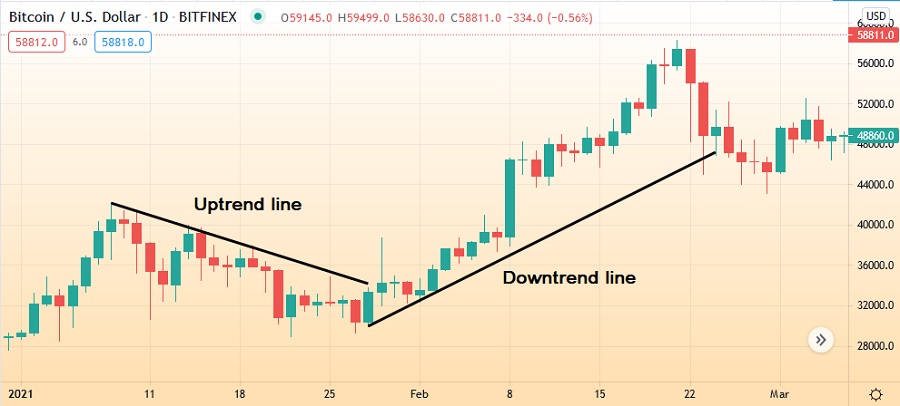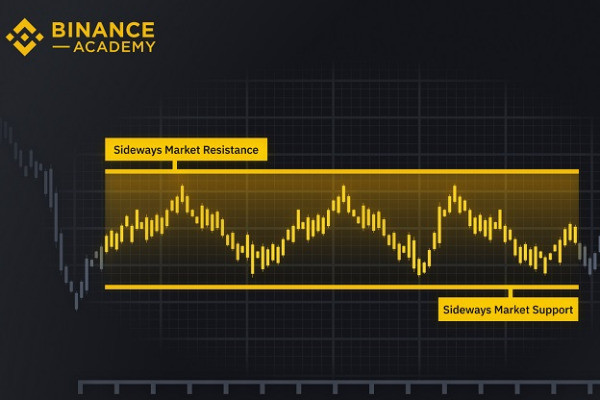Making profits in cryptocurrency trading needs a good strategy. What are the options if you are a beginner? From active to passive strategy, here are 5 types of cryptocurrency trading strategy to learn.

Trading strategies are plans, methods, or techniques implemented by traders in their trading activities. Although it is not mandatory, trading strategies will help prepare traders for all possible outcomes. This is especially true in an unpredictable financial market like cryptocurrency. Thus, it's important to have clear strategies when it comes to approaching the crypto market.
In general, there are 5 cryptocurrency trading types that are most well-known among traders:
- Day trading: Involves buying and selling financial instruments within the same trading day.
- Swing trading: A strategy that seeks to capture shorter-term price movements within a larger trend.
- Trend trading: A strategy where traders identify and follow the direction of a prevailing market trend.
- Scalping: A high-frequency trading strategy where traders aim to make quick profits from small price movements.
- Buy and hold investing: A long-term investment strategy where investors purchase assets and hold them for an extended period, often years or even decades.
Read the complete explanation below.
Day Trading
Day trading pertains to opening and closing several trades on the same day. With this strategy, day traders attempt to profit from intraday price movement. Day traders rely on technical analysis to come up with perfect day trading strategies in the crypto market.
Unlike other financial markets, the crypto market is open 24/7, 365 days a year, including on weekends. The main idea behind cryptocurrency day trading is to capitalize on short-term price fluctuation which occurs within the 24-hour time frame or less. And yes, the price does fluctuate in an unpredictable manner.
Crypto is notorious for its volatility, as it's even more volatile than forex. For day traders, high volatility offers high rewards. But remember, it also carries high risk with it, which in turn brings more stress. That's why beginners have to be extra careful when committing themselves to day trading in cryptocurrency.
See Also:
Swing Trading
Swing trading is a strategy where positions are typically held for more than a day but less than a month. Thus we can say that swing trading lies in the middle between day trading and trend trading.
Most fundamentalists are swing traders since fundamental changes tend to require several days to take effect on the price movement. However, swing traders can use either technical or fundamental analysis, or a combination of both to formulate their trading strategies.
Technical analysis can be utilized to determine the trend direction. But swing traders still need to predict the potential trend direction afterward and open positions accordingly.
Swing trading offers an ideal opportunity to novice traders. The time period is long enough so it requires less monitoring in comparison to day trading, while at the same time is short enough to allow traders to close positions without having to wait for major reversals that usually take weeks or even months to happen.
Trend Trading
Trend trading is a trading strategy that takes advantage of a trend in a particular direction. When the price moves higher, it is called an uptrend, whereas when the price moves lower, it is called a downtrend. Trend trading typically lasts for a few months.
To come up with trend trading strategies, technical traders use price action and technical indicators, such as moving averages, trend lines, Fibonacci retracements, etc. With technical analysis, trend traders can confirm whether the trend will continue or make a reversal.

Fundamental analysis is generally not needed by trend followers. This is because trend followers focus on the price movement in observable trends. However, the fundamental approach can also be used to analyze trends in the long term.
Scalping
Scalping is a trading strategy with low time frames that tries to make a fast profit. It is often associated with High-Frequency Trading (HFT). It is not uncommon for scalpers to open and exit trades in a matter of seconds.
Due to the quick time period, the potential profit of scalping is small. However, scalpers can make a large number of trades within a day, thus accumulating their profits over time.
The small profit margin necessitates scalpers to trade many positions in order to amplify their profits, which also amplifies the potential losses. Thus, it is a very risky strategy.
Scalping also demands high focus, fast execution, and a great understanding of chart reading. Scalpers need all these skills as they have to win consistently if they want to increase their overall profits.
Buy and Hold Investing
As the name implies, buy and hold is a passive investment strategy where traders buy a financial asset and hold it for a long period of time regardless of fluctuations in the market. Buy and hold investing uses fundamental analysis and generally ignores technical analysis.
In the Bitcoin community, there is a slang term called HODL which refers to this kind of strategy. This term was unintentionally coined by a member of an online forum when he misspelled the word 'holding'. HODL has become a specific term for Bitcoin investors to hold on to their positions in spite of strong volatility.
Pros and Cons of Active and Passive Trading Strategies
From the classification above, we can include day trading, swing trading, and trend trading into active trading. On the other hand, buy and hold investing can be classified as passive trading.
How so?
- Active trading strategies: methods applied by traders to generate profits from short-term price movement. This type of strategy is more time-consuming as traders are required to constantly monitor the market.
- Passive investing strategies: methods that involve fewer trading activities as passive investors attempt to profit from long-term investments. This type of strategy requires less attention but more patience to hold onto positions.
Now that we have covered the five cryptocurrency trading strategies, let's see the advantages and disadvantages of the abovementioned strategies:
Pros of Active Trading
- It is flexible, as in traders don't have to follow a specific cryptocurrency. Being flexible also means the ability to analyze the market environment and act accordingly. For example, flexible traders can trade on both uptrends and downtrends.
- Traders can profit from short-term trades. Techniques such as day trading and scalping present a real opportunity to exploit the market and gain profit within a day. This is because the crypto market fluctuates a lot.
- Traders can tweak their money management, such as by selling capital losses to offset other capital gains. For example, if we bought $5,000 in Bitcoin and sold it for $3,000, we can use our $2,000 in Bitcoin losses to offset other trades that are losing money.
Cons of Active Trading
- It is more expensive, which is mostly caused by transaction fees that add up from the numerous amounts of transaction.
- It poses higher risks. While winning trades can produce big profits, losing trades may generate disastrous losses. That's why it is very important to approach this type of strategy with caution.
Pros of Passive Trading
- Investors can save their time. Obviously, they will need to make their own research on the cryptocurrency they'd like to invest in. But once the positions are in, investors can relax a bit without constant monitoring.
- It is less risky. All investors need to do is hold their positions, keeping themselves away from greater risks that will be present if they buy and sell more actively.
- It may have tax advantages. In the US, if investors hold crypto investments for at least one year before selling them, they will be subject to a lower tax rate for long-term gains. Make sure to check on the tax rules concerning crypto investment in your country before making investments.
Cons of Passive Trading
- It is limited. Passive investors are locked into their holdings and cannot make maneuvers on the market.
- It takes a lot of patience. Compared to active traders, passive investors typically will earn less often than active ones. Although they mostly have bigger profits, the waiting game to earn it can be very taxing and is not suitable for everyone.
Final Words
The strategies above are some of the most commonly-used cryptocurrency trading strategies. Whatever strategy you choose to implement, you need to make sure that it suits your trading goals and styles.
For example, if you don't have the time to actively track your trades, you can apply the buy and hold strategy. But if you want to gain profit within a day, scalping or day trading is your best choice.
No matter what the choice is, make sure to test it on a demo account so you don't have to worry about risking any real money when you just want to see what fits you best.

 Dedicated FREE FOREX VPS
Dedicated FREE FOREX VPS Free FOREX Virtual Private Server
Free FOREX Virtual Private Server MT4 Demo Contest, Get $500
MT4 Demo Contest, Get $500 Sign Up for an Account, Claim 60% Deposit Bonus
Sign Up for an Account, Claim 60% Deposit Bonus Free MT4/MT5 VPS 2024
Free MT4/MT5 VPS 2024 Send E-mail and Get Free Merchandise
Send E-mail and Get Free Merchandise $1K Refer a Friend Bonus for Pepperstone Pro clients
$1K Refer a Friend Bonus for Pepperstone Pro clients Maximize Your Earnings with 100% Deposit bonus
Maximize Your Earnings with 100% Deposit bonus Trade to Win, $5,000 Monthly Demo Contest
Trade to Win, $5,000 Monthly Demo Contest Claim 30% + 15% Deposit Bonus from LiteFinance
Claim 30% + 15% Deposit Bonus from LiteFinance






 Bitcoin
Bitcoin Ethereum
Ethereum Tether
Tether BNB
BNB Solana
Solana USDC
USDC XRP
XRP Toncoin
Toncoin Dogecoin
Dogecoin Cardano
Cardano